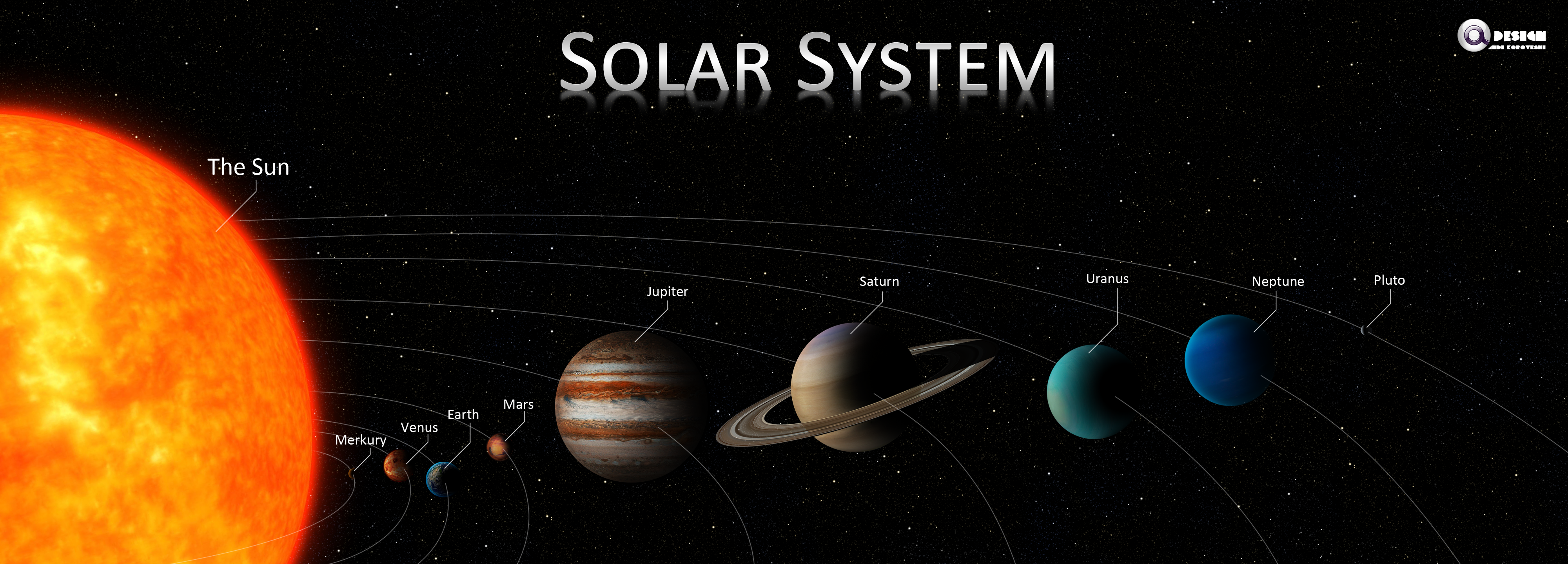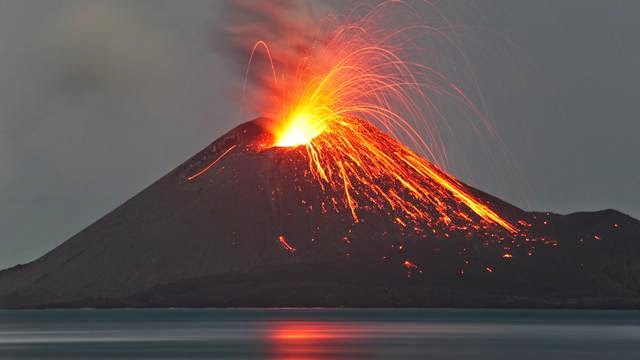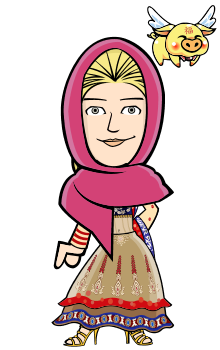"The Solar System, Our Earth and its natural resources"
Hello friends, I have much written about plants and the human body. I want to write about other branches of science too like our earth, solar system, materials and its properties, motion and force etc. This time I have to choose a topic is related to a solar system and our earth.
The Solar System
The sun’s family is called the solar system. The solar system included all the planets, moons, and comets, lumps of rocks, dust and gas. Everything in the solar system moves around the sun.

Image Source: THE SOLAR SYSTEM Via emaze
The Sun
Our sun is a star. Like all stars, it is a ball of hot, glowing gases. The sun may look small, but it is much bigger than Earth. It is very far away from us.
The Sun gives light and heat to the Earth. Living things need this light and heat. The Sun is so large that it is able to hold planets and all other things in the solar system to orbit around it.
The sun is the centre of our solar system. Here are the planets that are moving around the sun.
1- Mercury:
It is the closest planet to the sun. There is no water or air on it. Mercury takes only 88 Earth days to orbit the Sun. Mercury is often called a morning star. It shines brightly in the early morning just before the sunrise.
2- Venus:
It is the second planet from the Sun. Venus is covered with thick clouds of poisonous gases. Its surface is very hot. Venus is close to the Earth. It appears as the brightest planet in the night sky.
3- Earth:
Our Earth is also a planet. It is a huge rocky ball. It has air and water on it. Air and water support life on the Earth. From space, Earth looks blue because seas cover about 70% of its surface.
4- Mars:
The Surface of Mars is red. This planet has numerous craters on it. Mars is smaller than our Earth. Scientists are trying to find water on Mars. Mars is also called as red planet.

Image Source: Via Interglactic-hq
5- Jupiter:
It is the largest planet in our Solar System. Jupiter is a gas giant. It has several moons that move around it. Jupiter is a colourful planet.
6- Saturn:
It is the sixth planet of the Solar System. Saturn is smaller than Jupiter. It is also a gas giant. Saturn has beautiful rings around it.
7- Uranus:
This planet is also composed of gases. Uranus is a very cold planet. It spins on its side. Uranus is called an “ice giant”.
8- Neptune:
The eighth planet of the Solar System is deep blue in colour. Neptune is also a gas giant. Great dark spot on the surface of Neptune shows a giant storm.

Image Source: Untitled Via emaze
Moons
A Moon is an object that moves around a planet. There are several moons in the Solar System. Our Earth has one moon. Jupiter has 62 moons. Mercury and Venus have no moons.
Asteroids
An asteroid is large rocks moving around the Sun. Millions of asteroids are moving about the Solar System between Mars and Jupiter. Some asteroids are very big, other are very small in size.
Comets
A comet is made of dust and ice. A large number of comets are also orbiting the Sun. Scientists can only see them when they are close to the Sun. At this time a comet has a very long tail.
"Our Earth"
Our Earth is a planet. It is a huge rocky ball. From space, the Earth looks blue because three-quarters of its surface is covered with water. One-quarter of Earth’s surface is land. Deserts, plains, mountains and valleys are no land.

Image Source: Admin via Blogspot
“Clouds are the part of a thin layer of air around the Earth. This layer of air is called the atmosphere.”
Layers of the Earth
The Earth is round in shape. It has two poles, i.e. north people and the South Pole. Its diameter is about 12,800 kilometres. If we could cut Earth, we would find it made of layers. Earth is divided into three layers.
1- Crust
The crust is the outer most layer of Earth. It is about 50 kilometres thick. We all live on the Earth’s crust. It is made up of rocks.
2- Mantle
The next layer of the Earth is called mantle. It is about 3000 kilometres thick. It is a layer of hot rocks. It can flow like thick toothpaste.
3- Core
The core is the innermost layer of Earth. It is about 6400 kilometres thick. It is a layer of hot liquid rock called magma. It is too hot to imagine. Its temperature is about 4000◦C.
Shapes on Earth’s Surface
A solid feature on Earth’s crust is called a landform. Mountains, hills and valleys, etc. are landforms. Natural forces such as water, air and sunlight shape the landforms.
Volcanoes and Earthquakes
Volcanoes start in the mantle. A volcano is formed when hot molten rock, ash and gases come out of the Earth’s surface. As a volcano erupts, its pills lava that flows down slope, hot gases and ash are thrown into the air.
The Earth’s crust or surface is made of several pieces called plates. These plates are always moving very slowly. Sometimes, Earth’s plates can shift suddenly. This causes the ground to vibrate. This shaking of Earth’s plates is called an Earthquake.
Earthquakes can cause a lot of damage to buildings, bridges and roads. People can also be killed, injured or left homeless as a result of earthquakes.

Image Sources: Google Site
Earth’s Natural Resources
Resources are things that people can use for their benefit. Water, air, trees, petroleum, coal, gas, rocks, and soil are natural resources. Natural resources are a useful thing that comes from Earth.
Types of Natural Resources
There are three types of natural resources.
1- Some natural resources cannot be replaced after they are used up. Petroleum, coal, natural gas and minerals are such resources.
2- Some natural resources can be replaced after they are used. We can plant new trees to replace trees that are cut down for use.
3- Some natural Resources can never be used up. Water and air will never be used up. We can use them forever.
Rocks

Image Source: m m via Pinterest
Rocks are natural resources. Rocks are solid objects. We find them in many colours, sizes and shapes. Rocks are made mostly of minerals. A mineral is natural materials that form from non-living matter in the Earth.
“A very big rock is called a boulder.”
“Slate is a rock with layers. We can split apart these layers easily.”
“Granite rock is formed in a volcano. It is hardened underground.”
Minerals
There are three main types of mineral, i.e. Minerals fuels, metallic minerals and non-metallic minerals.
1-Mineral fuels:
Petroleum, natural gas and coal are mineral fuels. They are the main source of energy for us. We use these fuels to cook our meals. We use them to run our vehicles and industries. The supply of mineral fuels is limited. We should use them wisely.

Image Source: by Roshika Ram Via Slide Share in
2- Metallic Minerals:
Tin, copper, iron, aluminium, and gold are called metals or metallic minerals. Metals are usually hard and shiny. Electric current can also pass through them. Metals can be melted. Gold is used to make ornaments; iron is used to make told and machinery; aluminium is used to make pots.

Image Source: Via Geology of Gems
3- Non-metallic Minerals:
Clay, salt, sulphur and sandstone are non-metallic minerals.
Clay is used for making bricks and pottery.
Salt is added to many foods.
Sulphur is used to make paper, plastic and medicines, etc.
Sandstone is cut into blocks and used like bricks.
Diamonds are also minerals. Diamond is the hardest mineral of all.
Soil

Image Source: by Julie Monahan Via Organic Life
The soil is a natural resource. Soil covers most of the land. The soil is a thin layer of loose material. It takes a long time to develop. The soil has the material that plants need to grow. We get food from plants.
The soil is formed by the breaking of rocks. The Sun heats the rocks to expand. The night cools them to contract. It breaks the rocks. Winds, rains and earthquakes also cause the rocks to break into the soil.
Soil Layers
There are three layers of soil.
1- The top layer is called topsoil. Plants grow in this layer.
2- Below the topsoil is subsoil. The tree roots find water in this layer.
3- The deepest layer is bedrock.
Kinds of soil
There are three kinds of soil, i.e. sand, clay and silt.

Image Source: Via PICK4KEY
1- Sand particles are large. They have a lot of space between them. Water passes through sand easily.
2- Clay is made of small particles. It is thick and traps water.
3- Silt has medium-sized particles. It lets the right amount of water in and out.
Loam is a kind of soil made of sand, silt and clay. Plants grow well in loam. This soil holds both enough water and air for plants. Soil also contains hummus.
Hummus is made from rotten leaves and decayed bodies of dead animals and plants.
So, these are some info about our solar system, earth and its natural resources, I hope you enjoy reading it.
Regards:
InX_GL



